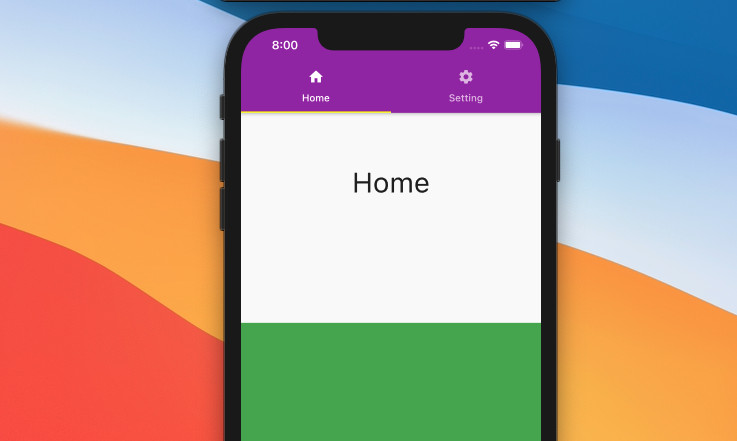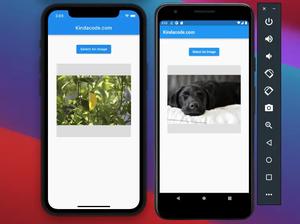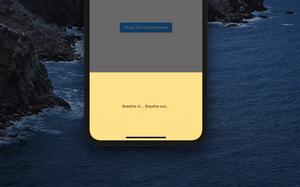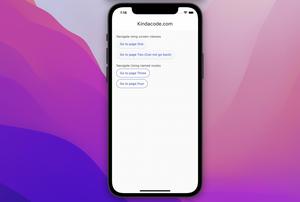
Today we’ll talk about the SliverAppBar widget in Flutter. The main part of this article is a complete example of implementing a SliverAppBar with a bottom section that consists of 2 tabs. The others are a few explanations and quick tips.
The Key Point
A SliverAppBar or other sliver widgets need to be placed inside a sliver group that wrapped by a CustomScrollView, like below:
CustomScrollView(
slivers: [
SliverAppBar(),
// Other sliver widgets
SliverList(),
SliverGrid()
],
),In addition, you can add more than one SliverAppBar if you want.
The Example
Preview
This example app has a SliverAppBar with a Home tab and a Settings tab at the bottom.

As you can see:
- When the user scrolls down a little bit, the title will disappear, and only the bottom area is visible.
- When the user scrolls up, the title shows up again.
The Code
The full code:
// main.dart
import 'package:flutter/material.dart';
void main() {
runApp(const MyApp());
}
class MyApp extends StatelessWidget {
const MyApp({Key? key}) : super(key: key);
@override
Widget build(BuildContext context) {
return MaterialApp(
debugShowCheckedModeBanner: false,
title: 'Kindacode.com',
theme: ThemeData(
primaryColor: Colors.purple,
colorScheme: ColorScheme.fromSwatch()
.copyWith(secondary: Colors.yellowAccent)),
home: const HomePage(),
);
}
}
class HomePage extends StatefulWidget {
const HomePage({Key? key}) : super(key: key);
@override
State<HomePage> createState() => _HomePageState();
}
class _HomePageState extends State<HomePage> {
// This function show the sliver app bar
// It will be called in each child of the TabBarView
SliverAppBar showSliverAppBar(String screenTitle) {
return SliverAppBar(
backgroundColor: Colors.purple,
floating: true,
pinned: true,
snap: false,
title: Text(screenTitle),
bottom: const TabBar(
tabs: [
Tab(
icon: Icon(Icons.home),
text: 'Home',
),
Tab(
icon: Icon(Icons.settings),
text: 'Setting',
)
],
),
);
}
@override
Widget build(BuildContext context) {
return Scaffold(
body: DefaultTabController(
length: 2,
child: TabBarView(children: [
// This CustomScrollView display the Home tab content
CustomScrollView(
slivers: [
showSliverAppBar('Kindacode Home'),
// Anther sliver widget: SliverList
SliverList(
delegate: SliverChildListDelegate([
const SizedBox(
height: 400,
child: Center(
child: Text(
'Home Tab',
style: TextStyle(fontSize: 40),
),
),
),
Container(
height: 1500,
color: Colors.green,
),
]),
),
],
),
// This shows the Settings tab content
CustomScrollView(
slivers: [
showSliverAppBar('Settings Screen'),
// Show other sliver stuff
SliverList(
delegate: SliverChildListDelegate([
Container(
height: 600,
color: Colors.blue[200],
child: const Center(
child: Text(
'Settings Tab',
style: TextStyle(fontSize: 40),
),
),
),
Container(
height: 1200,
color: Colors.pink,
),
]),
),
],
)
]),
));
}
}To avoid duplicate code, I assigned SliverAppBar to the function showSliverAppBar:
SliverAppBar showSliverAppBar(String screenTitle) {
return SliverAppBar(
backgroundColor: Colors.purple,
floating: true,
pinned: true,
snap: false,
title: Text(screenTitle),
bottom: const TabBar(
tabs: [
Tab(
icon: Icon(Icons.home),
text: 'Home',
),
Tab(
icon: Icon(Icons.settings),
text: 'Setting',
)
],
),
);
}Common Parameters
Below are the most commonly used parameters of SliverAppBar:
| Option | Type | Description |
|---|---|---|
| title | Widget | The primary widget displayed in the app bar often is a Text widget |
| leading | Widget | The widget before the title |
| actions | List<Widget> | A group of widgets after the title |
| bottom | PreferredSizeWidget | Used to add the bottom section |
| floating | bool | Determines whether the app bar should become visible as soon as the user scrolls towards the app bar |
| pinned | bool | Determines whether the app bar should remain visible at the start of the scroll view |
| snap | bool | If both snap and floating are true, the floating app bar will snap to the view. |
References
- App bars: top (material.io)
- Navigation Bars (developer.apple.com)
- SliverAppBar class (flutter.dev)
- CustomScrollView class (flutter.dev)
Conclusion
In this article, we’ve examined an end-to-end example of using SliverAppBar in Flutter. If you would like to learn more about the sliver stuff and other interesting things in Flutter, take a look at the following articles:
- Flutter SliverList – Tutorial and Example
- Example of CupertinoSliverNavigationBar in Flutter
- Flutter AnimatedList – Tutorial and Examples
- Flutter: SliverGrid example
- Flutter: Creating OTP/PIN Input Fields (2 approaches)
- Flutter & Hive Database: CRUD Example
You can also check out our Flutter topic page or Dart topic page for the latest tutorials and examples.



















